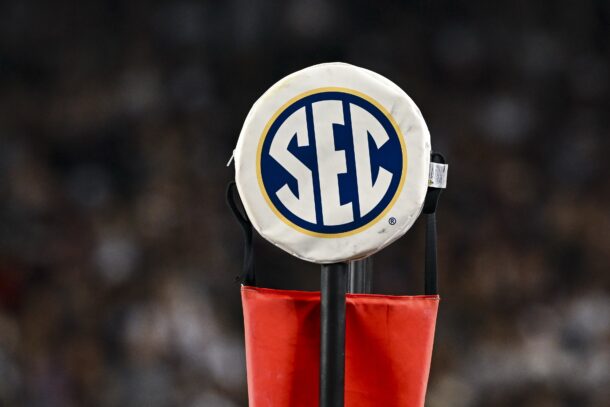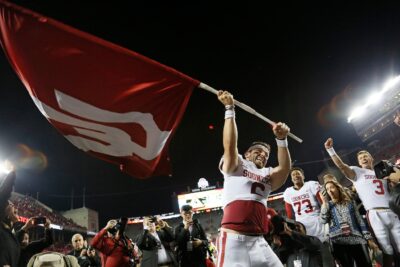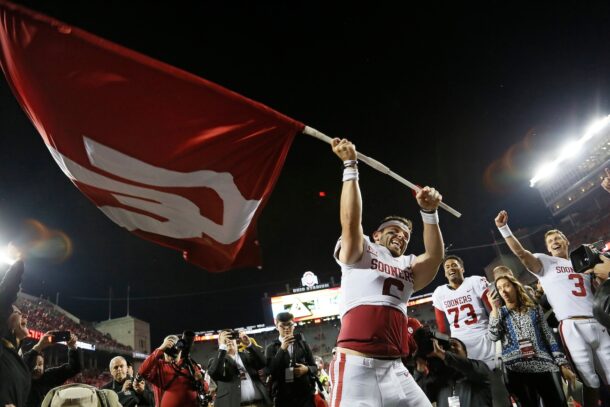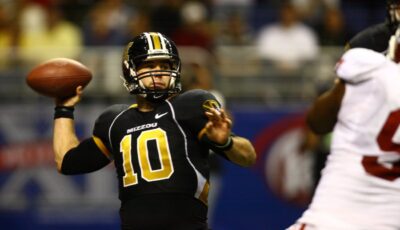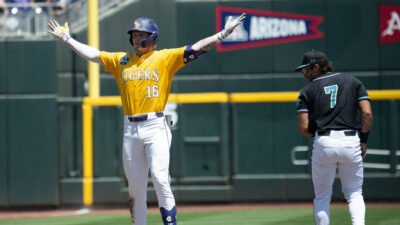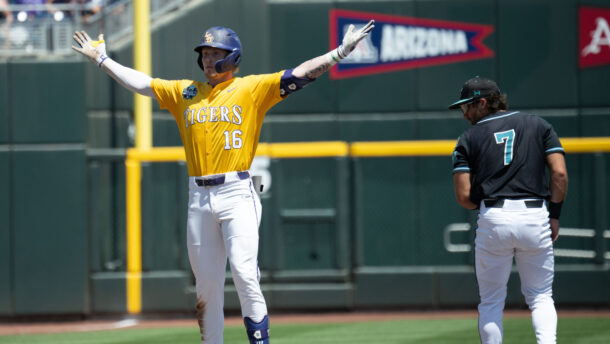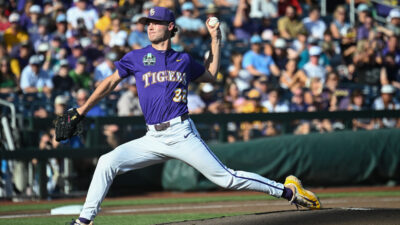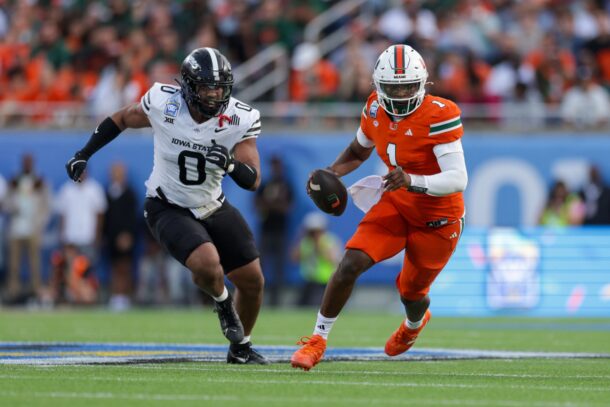
Miami started the season 9-0 and closed it on Saturday with a third loss in 4 games.
The Hurricanes had a 3-point halftime lead on Iowa State in the Pop-Tarts Bowl and took a 10-point lead midway through the third quarter, but could not halt an Iowa State drive in the closing minutes of the game and ultimately lost 42-41.
Here are 3 takeaways from the game.
Defense optional
The first half of the game featured 59 combined points, 625 yards of offense, and 29 first downs. Miami’s Cam Ward threw 3 touchdown passes. There were 11 plays of at least 20 yards. Ward had touchdown passes of 40 and 33 yards. Miami tailback Damien Martinez scored on a 75-yard touchdown run. Iowa State’s Carson Hansen scored on a 30-yard touchdown run.
Defense wasn’t just optional, it was actively discouraged.
The Canes averaged 9.4 yards per play. The Cyclones averaged 7.4 yards per play. Miami was wonderfully balanced, with 190 passing yards and 168 rushing yards. Neither team could stop the other with any degree of success. Iowa State scored touchdowns on its first 4 drives of the game. Miami scored touchdowns on 5 of its 7 first-half possessions, and the 2 “stops” weren’t defensive stops, they were Miami turnovers.
In the third quarter, Miami took a 10-point lead over the Cyclones with 8:09 to play. On the first play of Iowa State’s ensuing drive, Hansen picked up 27 yards on the ground to kick off a 10-play, 75-yard scoring drive that took 5:49 off the clock and brought the Cyclones within 3 points.
When ISU took over with 6:34 to play, it needed to drive 84 yards to win the game. It took 15 plays, but the Cyclones crossed the goal line with 56 seconds to play. Rocco Becht converted a third-and-6 with his legs. Becht picked up 29 yards through the air on third-and-1. And then he scored on fourth-and-goal from the 1. Becht ended the game with 270 yards through the air, completing 22 of his 36 passes. He threw 3 touchdowns, ran for a touchdown, and didn’t turn the ball over. Miami just needed one stop at the end and never got it.
But that was the story of the season. The Hurricanes had a College Football Playoff-caliber offense led by a Heisman-caliber quarterback. It wasted both because the defense couldn’t consistently do the little things.
Quarterback controversy
Cam Ward started the game and threw 19 passes in the first half. There were highlights galore as the Heisman Trophy finalist diced the Iowa State secondary. But Emory Williams replaced him at halftime and Ward never re-entered the game. Not even when took possession with 51 seconds left, trailing by a point.
Williams went 5-for-14 for 26 yards and was picked off on the final desperation heave of the night. A 6-foot-5 sophomore, Williams struggled heavily after taking the keys from Ward. He went into the final drive with only 2 completions and 6 passing yards. Miami’s offense averaged just 4.9 yards per play in the second half.
Some believe Ward sat out the second half for precautionary reasons. Some believe coach Mario Cristobal wanted to see Ward’s backup. It’s not clear exactly why Miami made a quarterback change, but Ward didn’t seem to pick up an injury. He’s expected to be one of the first quarterbacks taken in the 2025 NFL Draft. He’ll assuredly be a first-round draft pick. Had Ward chosen to sit out the game entirely, no one would have batted an eye. But he chose to play.
That decision came as a surprise to me. Unless he was just itching to eat a giant Pop-Tart, there wasn’t much to gain by playing. Miami was Playoff-bound until the season fell apart in the final month. In a non-Playoff bowl game, Ward could only hurt himself and lose money.
Play, or don’t play.
It makes no sense to play a half and sit out a half. It made no sense for Ward to sit with a 3-point lead and watch from the sideline while the Hurricanes tried to close out the runners-up in the Big 12. Frankly, it was a bad look to see Ward — fully dressed — operating as a spectator on the sideline while a clearly ineffective backup went out to lead a game-winning drive. Regardless of who’s decision it was, it was a strange one.
Ward led dramatic comebacks all year. He needed only to drive Miami into field goal range. But the Hurricanes went with Williams and couldn’t get going. His Hail Mary attempt with 3 seconds left came from the Miami 40.
Miami backs go crazy
Damien Martinez had 179 rushing yards and a touchdown on 14 carries. Mark Fletcher Jr. had 62 rushing yards on 12 carries. As a team, the Canes ran for 308 yards at 7.9 a carry. It was the best rushing performance of the season (by far). The previous high came on Sept. 14 against Ball State when Miami ran for 243 yards.
If you’re looking for positives, it was the ground game. Martinez, with the performance, surpassed 1,000 yards on the season and became the first Miami rusher to do so since 2016. And his 132 rushing yards in just the first half were the most by an ACC player in a bowl game since 2015.
Martinez has yet to reveal his intentions for next year. The junior can return for another season or jump to the NFL. He ran for more than 2,000 yards in his 2 years at Oregon State, moved to Miami, and showed he could be the same bruising back in a different offense. He’ll be drafted if he declares.
But if he comes back, Miami can certainly orient its offense around his talents next season.
Derek Peterson does a bit of everything, not unlike Taysom Hill. He has covered Oklahoma, Nebraska, the Pac-12, and now delivers CFB-wide content.
